Animals' ability to sense impending natural disasters has long intrigued scientists and researchers alike. The intricate ways in which various species respond to environmental cues before calamities strike raise questions about the depth of their sensory perception. While anecdotal evidence abounds, the scientific community continues to delve into the mechanisms behind these behaviors, seeking concrete explanations for animals' intuitive reactions. Understanding how animals navigate the fine line between instinct and sensory acuity holds promise not only for disaster mitigation but also for unlocking the mysteries of the natural world's interconnectedness.
Key Takeaways
- Wildlife's enhanced sensory abilities detect environmental cues for disaster anticipation.
- Animals rely on changes in air and water pressure, vibrations, and electromagnetic fields.
- Survival instincts prompt diverse species to exhibit premonitory behaviors before calamities.
- Scientifically, animals sense disasters through air and water pressure changes, vibrations, and chemical alterations.
Animal Behavior Changes Before Disasters
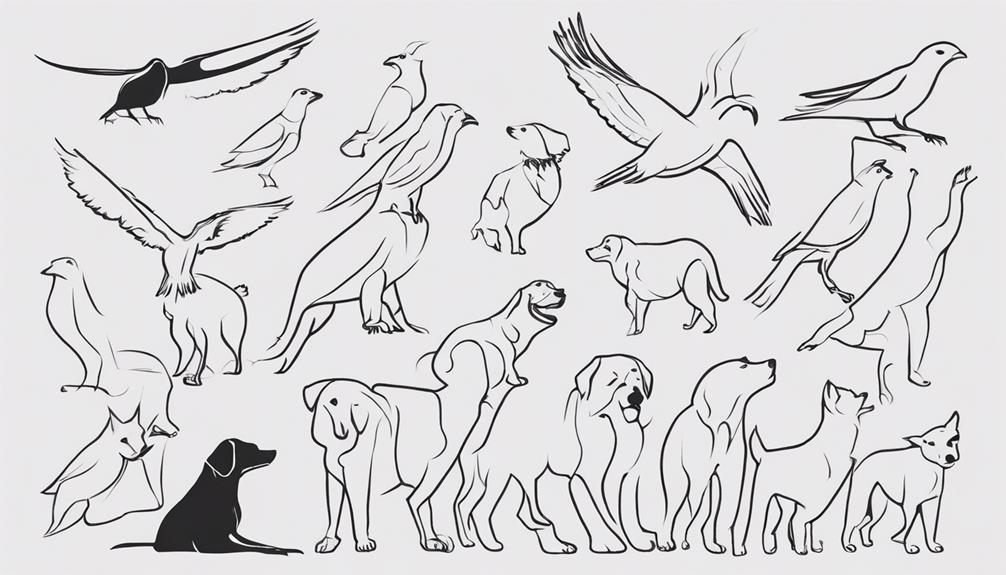
Animals exhibit discernible behavioral changes in anticipation of natural disasters, indicating a potential connection between their instincts and imminent environmental disturbances. Instances such as rats, weasels, snakes, and centipedes fleeing before a significant earthquake in Greece in 373 BC, as well as elephants and dogs moving to higher ground before the 2004 Indian Ocean tsunami, highlight how animals can sense impending danger. The toads abandoning their pond before an earthquake in Italy in 2009 further solidify the link between animal behavior changes and seismic events. Birds hunkering down before storms due to air pressure changes and sharks heading to deeper waters before hurricanes to sense pressure changes are additional examples of animals' ability to detect approaching natural disasters. These behaviors suggest that animals possess a unique sense or warning system that allows them to perceive environmental cues and respond in ways that indicate an impending threat, showcasing their remarkable abilities to adapt to their surroundings.
Heightened Senses in Wildlife
Wildlife's heightened senses play a vital role in their ability to sense impending natural disasters. Through adaptations such as detecting changes in air pressure, electromagnetic fields, and vibrations, animals like birds, elephants, and snakes exhibit remarkable survival instincts. These sensory abilities allow wildlife to perceive environmental shifts and seek safety before the onset of calamities, showcasing the intricate relationship between animal behavior and natural phenomena.
Animal Sensory Adaptations
Heightened sensory adaptations in various species enable wildlife to perceive subtle environmental cues indicative of impending natural disasters. Animals like birds and sharks possess heightened senses to detect changes in air and water pressure before natural disasters strike. For instance, birds can sense air pressure changes preceding storms, while sharks can detect alterations in water pressure before hurricanes. Dogs and elephants, on the other hand, rely on acute smell and hearing abilities to understand environmental changes. Researchers propose that animals may also sense earthquakes and tsunamis through shifts in electromagnetic fields and infrasound. These sensory adaptations allow animals to feel vibrations and notice slight modifications in their surroundings, providing them with an early warning system for potential disasters.
Survival Instincts in Wildlife
Adaptations in sensory perception among diverse species demonstrate a remarkable capacity for wildlife to anticipate and respond to environmental cues signaling potential natural disasters. Wildlife, equipped with heightened senses, can detect subtle changes in air and water pressure, allowing animals like birds and sharks to predict impending calamities. Survival instincts in wildlife are evident through early warning behaviors, such as elephants migrating to higher ground before tsunamis strike. Additionally, animals like toads and snakes exhibit unusual behaviors prior to earthquakes, suggesting a unique ability to sense disasters before they occur. By relying on their sharp senses to detect environmental changes, including vibrations and infrasound from earthquakes and storms, wildlife showcases how natural signals play a crucial role in predicting disasters and guiding animals to safety.
Premonition in Animal Actions
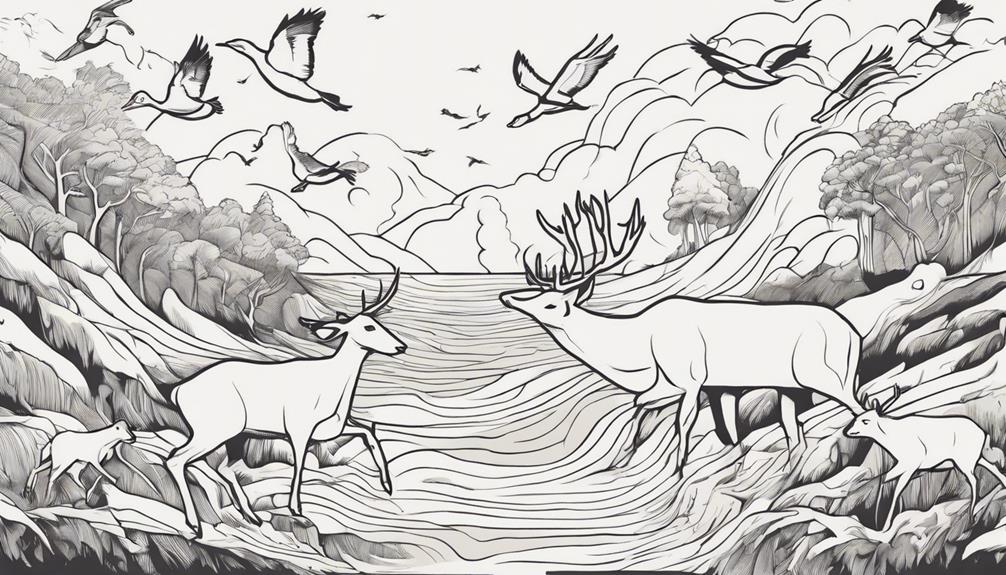
The ability of animals to sense impending natural disasters through premonitory behaviors raises intriguing questions about their cognitive capacities and sensory acuity. By observing the actions of creatures such as rats, elephants, birds, and toads before catastrophic events, researchers can gain valuable insights into the mechanisms behind these instinctual warning signs. Understanding the mysterious ways in which animals react to environmental cues, like changes in air pressure or water currents, is crucial in deciphering the complex relationship between wildlife and natural calamities.
Animal Behavior Indications
Manifestations of animal behavior as a precursor to natural disasters have long intrigued researchers seeking to unravel the mysteries of this phenomenon. Animals, such as cows, sheep, and dogs, have displayed early warning behaviors before earthquakes, suggesting a potential link between their actions and impending disasters. These behaviors include restlessness, fleeing to higher ground, or exhibiting unusual agitation. Some animals can sense changes in environmental factors like atmospheric pressure, electromagnetic fields, and infrasound signals related to earthquakes, providing them with an early warning system. Birds and sharks have also shown instinctual responses to pressure changes before hurricanes, indicating their ability to perceive approaching natural disasters. While animal behaviors can offer valuable warning signals for disasters, it is essential to approach them with caution and scientific validation.
Instinctual Warning Signs
Exhibiting instinctual warning signs, animals demonstrate a remarkable ability to anticipate and react to natural disasters before they occur. These behaviors serve as a crucial survival mechanism, allowing animals to sense impending danger and take necessary precautions. Warning signs may include restlessness, increased vigilance, or sudden changes in behavior patterns. By tapping into their instincts, animals seek safety by fleeing to higher ground, moving to secure locations, or displaying signs of distress before an impending disaster strikes. This innate ability to perceive environmental cues and react accordingly showcases the remarkable connection animals have with their surroundings. Understanding these instinctual responses can provide valuable insights into the ways different species navigate the challenges posed by natural disasters.
Mysterious Animal Reactions
Evidencing enigmatic responses, animals' cryptic behaviors preceding natural disasters intrigue researchers seeking to unravel the mysteries of their premonition abilities. Animals like elephants, dogs, and toads have displayed peculiar behaviors before events such as earthquakes, leading to speculation about their predictive capabilities. To study this phenomenon, researchers have equipped animals in earthquake-prone regions, including cows, sheep, and dogs, with sensors to monitor their behavior closely. These animals may detect subtle changes in atmospheric pressure, electromagnetic fields, and infrasound signals, providing them with early warning signs of impending disasters. While these observations are fascinating, more research is essential to determine the consistency and reliability of animals' predictive behaviors.
| Animal | Premonition Behavior | Natural Disaster |
|---|---|---|
| Elephants | Changes in movement patterns and vocalizations | Earthquake |
| Dogs | Restlessness and heightened alertness | Tsunami |
| Toads | Abnormal migration patterns | Landslide |
Ancestral Instincts in Disaster Detection
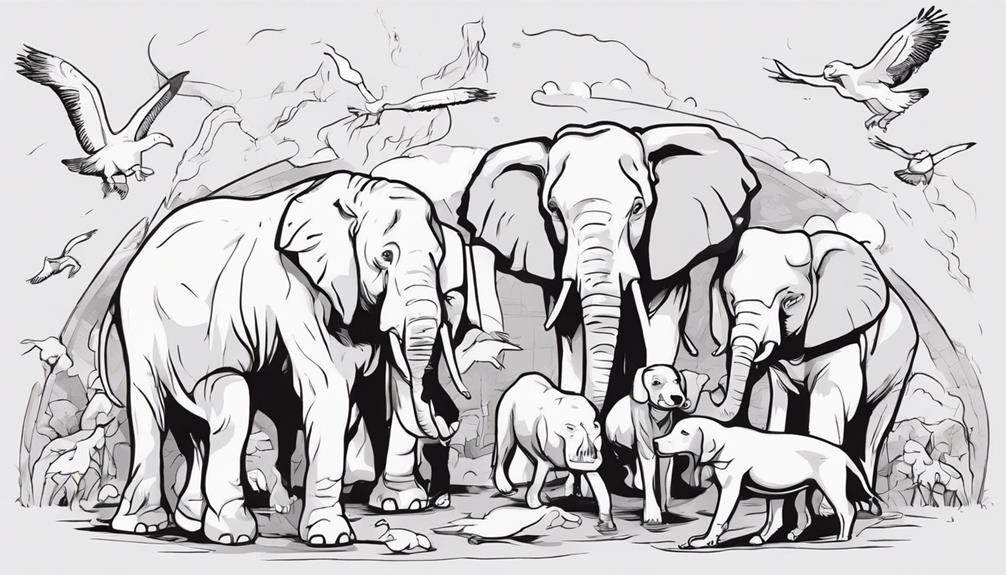
An exploration of the ancestral instincts that drive animals' ability to detect natural disasters reveals a profound evolutionary adaptation essential for their survival. Animals have developed remarkable early warning behaviors deeply rooted in their ancestral instincts, guiding them to react to environmental cues signaling impending natural disasters. These survival mechanisms have been honed over generations, allowing animals to sense and respond to changes in their surroundings with remarkable accuracy. Key aspects of ancestral instincts in disaster detection include:
- Animals like elephants and dogs exhibit ancestral instincts by moving to higher ground before tsunamis.
- Ancestral survival instincts prompt animals to seek safety in forests before natural disasters.
- Early warning behaviors in animals are linked to ancestral instincts for survival in the face of danger.
- Animals' responses to environmental cues reflect their ancestral instincts to sense and escape natural disasters.
- Ancestral instincts drive animals to respond to changes in their surroundings as a survival mechanism.
Animals Reacting to Imminent Catastrophes
Animals' innate ability to react to imminent catastrophes underscores a critical aspect of their survival instincts rooted in ancestral behaviors and sensory adaptations. Historical accounts, such as rats, weasels, snakes, and centipedes fleeing before a significant earthquake in Greece in 373 BC, highlight animals' sensing capabilities concerning natural disasters. Similarly, elephants and dogs moving to higher ground before the 2004 Indian Ocean tsunami exemplify animals' aptitude to anticipate catastrophic events. Birds' pre-storm behavior, attributed to their sensitivity to air pressure changes, showcases their ability to perceive environmental shifts before disasters strike. Moreover, toads abandoning their pond prior to an earthquake in Italy in 2009 and sharks heading to deeper waters before hurricanes to detect pressure changes further emphasize animals' natural instinct to react to imminent dangers. These instances collectively demonstrate the remarkable sensing abilities animals possess in response to impending natural disasters, shedding light on their unique survival strategies.
Scientific Explanations for Animal Foresight
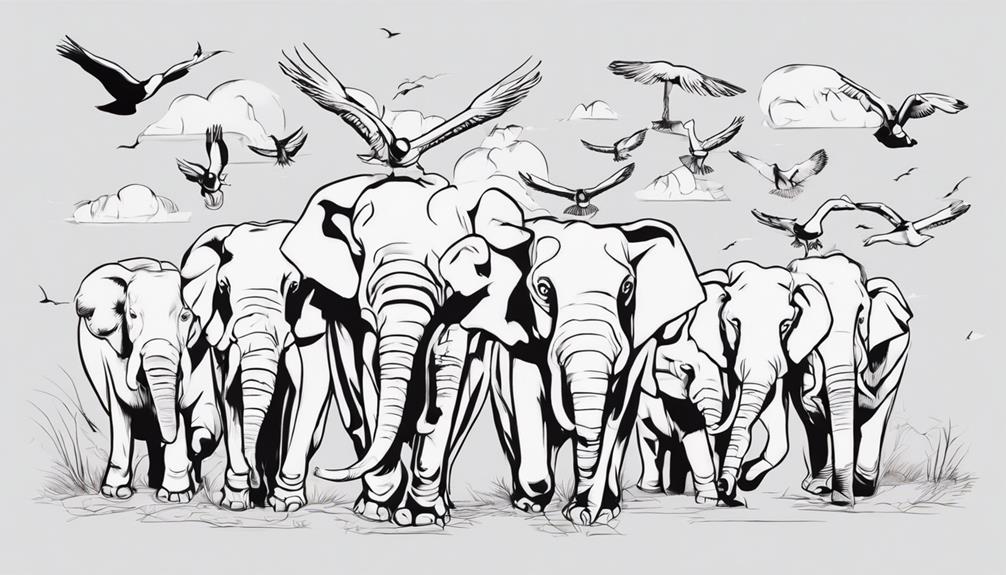
With advancements in scientific research, the mechanisms underlying animals' foresight in sensing natural disasters have garnered increasing attention and scrutiny. Animals exhibit remarkable abilities to detect subtle environmental cues that precede natural disasters, prompting researchers to explore the scientific explanations behind this phenomenon. Some key factors contributing to animals' foresight in sensing natural disasters include:
- Air Pressure Changes: Animals such as birds and sharks can perceive fluctuations in air pressure, allowing them to anticipate approaching storms.
- Water Pressure Changes: Certain species, like sharks, have evolved to detect variations in water pressure before the onset of hurricanes, showcasing their ability to sense impending disasters.
- Chemical Changes in Groundwater: Researchers propose that animals may also be sensitive to chemical alterations in groundwater, serving as a potential precursor to natural disasters.
- Vibrations and Infrasound: Animals can feel vibrations and detect infrasound produced by earthquakes and hurricanes, providing them with early warning signals to react swiftly.
- Instinctive Behaviors: While not scientifically validated as foolproof predictors, animals demonstrate instinctive behaviors that aid in their anticipation and response to environmental changes associated with natural disasters.
Environmental Cues Sensed by Animals
Environmental cues play a pivotal role in animals' ability to sense impending natural disasters. Animals possess remarkable sensory abilities that allow them to detect subtle changes in their surroundings, enabling them to anticipate events such as storms, earthquakes, and hurricanes. Some key environmental cues that animals are sensitive to include variations in air pressure and water pressure changes. Birds, for example, can perceive shifts in air pressure before the onset of storms, while sharks are known to sense alterations in water pressure signaling approaching hurricanes. These heightened sensitivities likely evolved as adaptive mechanisms for survival, helping animals react promptly to impending threats. Additionally, animals may also respond to infrasound produced by seismic activities and hurricanes, further enhancing their ability to sense natural disasters. Researchers have even proposed that animals can detect chemical changes in groundwater preceding certain catastrophic events. Through these sensory mechanisms, animals demonstrate a keen awareness of their environment, allowing them to prepare for and potentially mitigate the impact of various natural disasters.
| Environmental Cues | Types of Events |
|---|---|
| Air pressure changes | Storms |
| Water pressure changes | Hurricanes |
| Infrasound detection | Earthquakes, Hurricanes |
| Electromagnetic fields | Various natural disasters |
| Chemical changes | Groundwater-related events |
Unusual Animal Behavior as Warning Signs
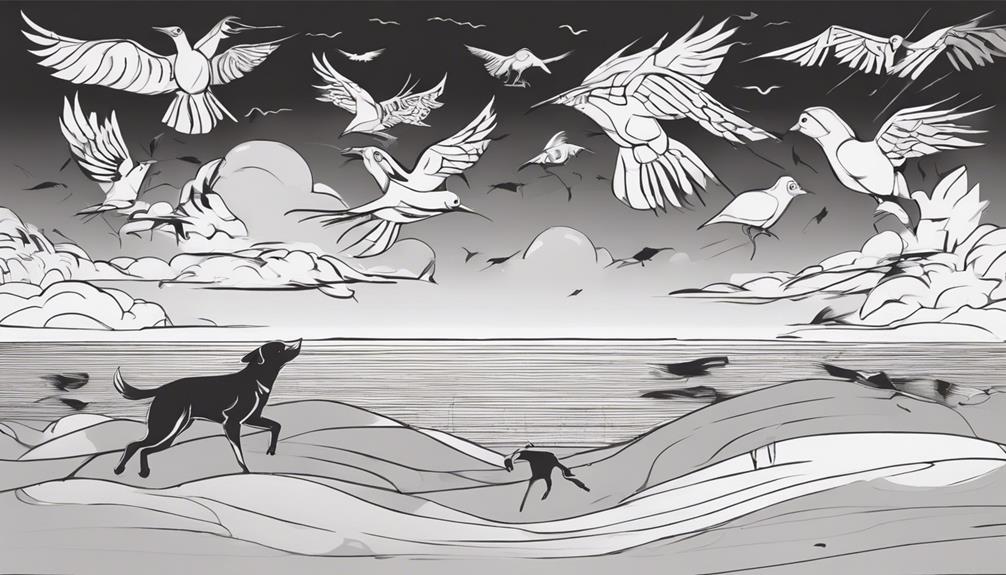
Animal agitation signals, abnormal group movements, and unusual vocalizations detected in various species serve as potential warning signs of imminent natural disasters. These behavioral changes observed in animals before catastrophic events can provide valuable insights into their ability to perceive environmental disturbances. Understanding and monitoring these unusual animal behaviors could offer a proactive approach to disaster management and enhance early warning systems.
Animal Agitation Signals
Before the occurrence of natural disasters, animals often display signs of agitation through behaviors such as restlessness, fleeing, or unusual actions, serving as potential warning indicators for imminent catastrophic events.
- Rats, weasels, snakes, and centipedes fleeing before earthquakes.
- Elephants moving to higher ground before tsunamis.
- Unusual animal behaviors as warning signs for imminent natural disasters.
- Global documentation of animal agitation signals before significant seismic events.
- Scientists studying animal agitation signals to enhance early warning systems for natural disasters.
Abnormal Group Movements
Abnormal group movements observed in various animal species serve as valuable premonitory signals of impending natural disasters. Instances such as rats, weasels, snakes, and centipedes fleeing before a significant earthquake in Greece in 373 BC, and elephants and dogs seeking higher ground before the 2004 Indian Ocean tsunami, highlight how unusual animal behavior can act as a warning sign. Birds altering their behavior in response to air pressure changes before storms, as well as toads abandoning their pond prior to earthquakes, demonstrate animals' sensitivity to environmental shifts. Sharks migrating to deeper waters before hurricanes also showcase how animals can sense pressure changes linked to impending natural disasters. Understanding these abnormal group movements can provide insights into the early detection of natural calamities.
Unusual Vocalizations Detected
Uncommon vocalizations emitted by various species preceding natural disasters serve as potential indicators of heightened alertness and stress levels. Animals exhibit early warning behaviors through their vocalizations, signaling impending danger. Some key points to consider regarding unusual animal vocalizations include:
- Animals may emit increased barking or howling before earthquakes and tsunamis.
- Researchers suggest that animals use vocalizations to communicate distress and sense potential threats.
- Uncommon or persistent vocalizations from pets or wildlife could serve as early warning signs for natural disasters.
- Monitoring changes in animal vocalizations could offer valuable insights into their ability to detect and respond to environmental hazards.
- Understanding the significance of animal vocalizations can aid in disaster preparedness and response efforts.
Cross-Species Awareness of Natural Events
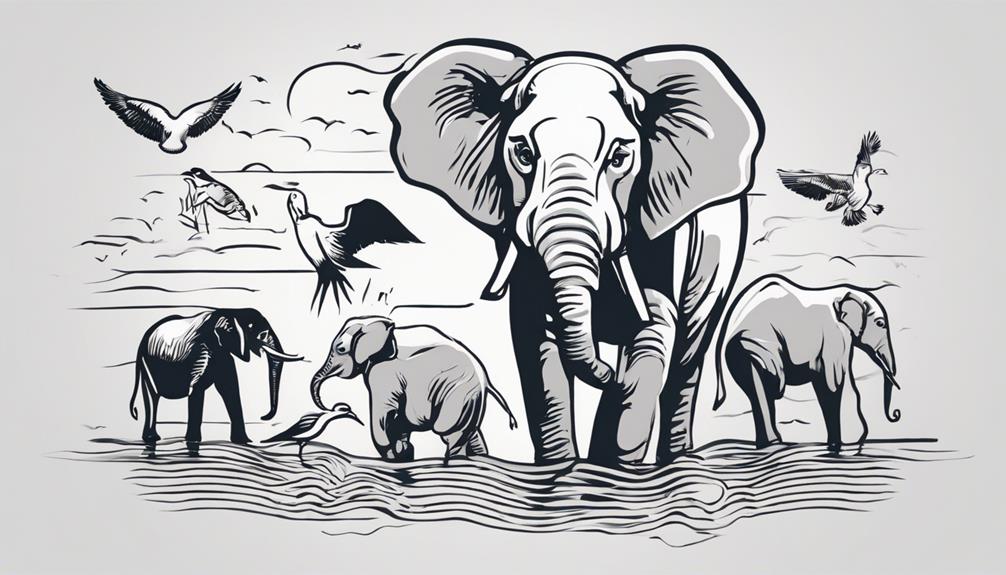
Through a comparative analysis of animal behaviors in response to natural events, researchers are uncovering intriguing insights into cross-species awareness of environmental phenomena. Animals exhibit early warning behaviors before natural disasters, such as earthquakes and storms, by displaying restlessness, unusual movements, or migrating to safer locations. This behavior showcases their ability to sense impending dangers and highlights their instinctual responses to environmental changes. Birds, sharks, and various other species possess acute senses that enable them to detect shifts in air or water pressure, vibrations, infrasound, and alterations in electromagnetic fields associated with natural disasters. Scientists suggest that animals can interpret these environmental cues to anticipate events like earthquakes and hurricanes. By studying how different species sense and respond to natural disasters, researchers aim to deepen our understanding of the intricate mechanisms underlying cross-species awareness of such events. This research not only sheds light on animal behavior but also provides valuable insights for enhancing early warning systems for humans facing similar environmental threats.
Animal Response to Seismic Activity
Studies have shown that animals possess the ability to detect seismic waves, with some demonstrating the capacity to sense the P wave prior to the S wave. Research on animal earthquake prediction is particularly active in countries like China and Japan, where scientists study animal behavior as a potential indicator of seismic activity. Some animals exhibit unusual behavior before earthquakes, such as restlessness or fleeing from their habitats, suggesting a sensitivity to impending natural disasters. However, the lack of consistent and reliable patterns in animal behavior before earthquakes poses significant challenges in using this information for earthquake prediction. Scientists emphasize the necessity for further research to validate the reliability of animal earthquake prediction abilities, as this field holds promise for enhancing early warning systems and disaster preparedness strategies.
- Animals can sense seismic waves, with some able to detect the P wave before the S wave.
- Research on animal earthquake prediction is prominent in countries like China and Japan.
- Some animals exhibit unusual behavior before earthquakes, suggesting a sensitivity to seismic activity.
- Lack of consistent and reliable animal behavior patterns before earthquakes poses challenges in prediction.
- Scientists emphasize the need for further research to validate animal earthquake prediction abilities.
Animal Communication Prior to Disasters
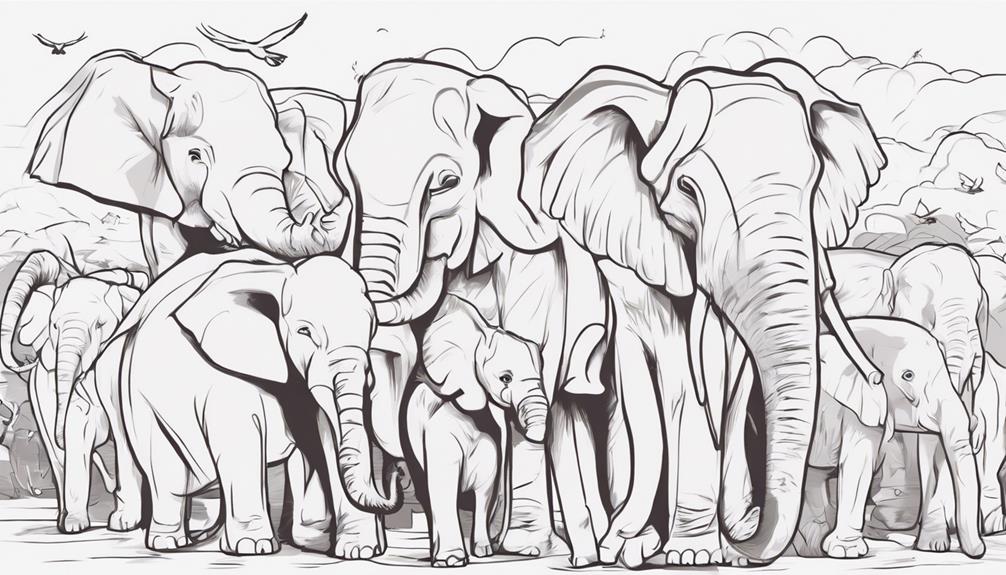
In the realm of animal behavior research, the communication exhibited by animals prior to natural disasters emerges as a crucial area of investigation. Animals have shown the ability to signal impending disasters through various warning signals such as changes in behavior, vocalizations, body postures, and group movements. This form of animal communication before natural disasters is believed to serve as a mechanism for alerting others in their group about potential threats in the environment. Some species, like elephants and birds, have been observed to exhibit distinct vocalizations or calls prior to disasters, suggesting a coordinated effort to communicate danger. Through these non-verbal cues and alarm signals, animals enhance their collective survival chances by recognizing and responding to environmental changes effectively.
| Warning Signals | Communication Methods | Animal Species Involved |
|---|---|---|
| Changes in behavior | Vocalizations | Elephants |
| Group movements | Body postures | Birds |
| Vocalizations |
The Role of Animal Migration Patterns
Animal communication prior to natural disasters has shed light on the significance of animal migration patterns in detecting impending environmental threats.
- Indicator of Impending Disasters: Animal migration patterns have been observed as a potential early warning system for natural disasters such as tsunamis, storms, and hurricanes.
- Species-Specific Responses: Different animals exhibit unique migration behaviors in response to impending disasters, showcasing the diversity of natural disaster detection abilities in the animal kingdom.
- Environmental Sensitivity: The ability of animals to sense changes in their surroundings and react through migration highlights their sensitivity to natural cues.
- Research Implications: Studying animal migration patterns provides researchers with valuable insights into the mechanisms behind early disaster detection in wildlife.
- Integration into Early Warning Systems: Understanding and leveraging animal migration patterns can contribute to the development of more effective early warning systems for natural disasters, potentially saving human lives and minimizing damage.
Animals as Early Warning Systems
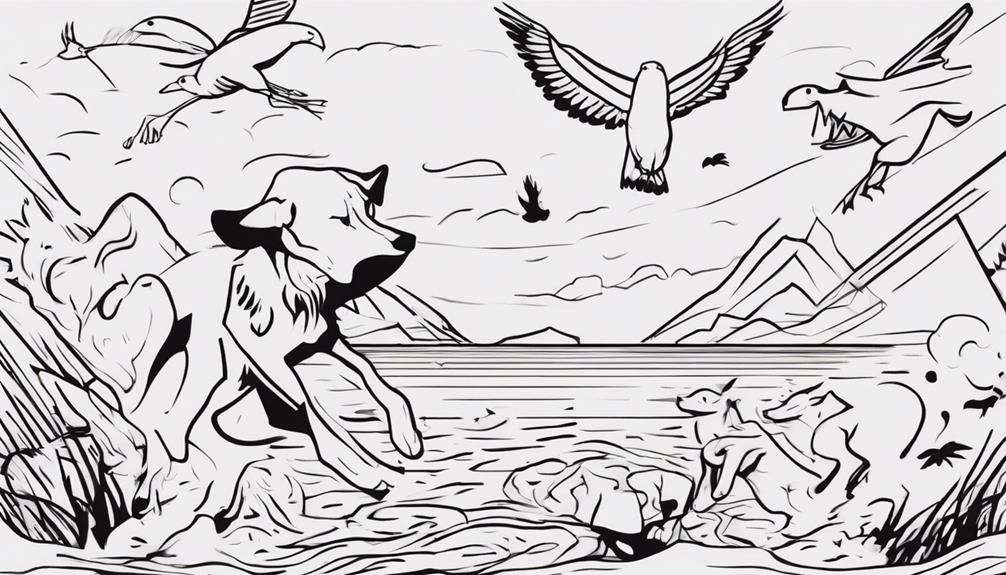
Utilizing animals as early warning systems for natural disasters has garnered scientific interest due to their demonstrated abilities to exhibit predictive behaviors preceding seismic events and environmental catastrophes. Animals like elephants, dogs, birds, and sharks have shown early warning behaviors before events such as earthquakes, tsunamis, and storms. Researchers propose that animals may sense imminent disasters through detecting changes in atmospheric pressure, electromagnetic fields, and water pressure. While these observations suggest animals' potential as early warning systems, caution is necessary due to the lack of robust scientific evidence supporting their reliability. Studies have even gone so far as to attach sensors to animals like cows, sheep, and dogs in earthquake-prone regions, noting their restlessness and altered behavior prior to seismic events. Collaborative projects like the Icarus initiative aim to harness animals' sensing abilities to develop simpler early warning systems based on their behavior preceding natural disasters.
| Animal | Predictive Behavior | Natural Disaster |
|---|---|---|
| Elephants | Migration to higher ground | Earthquake |
| Dogs | Agitation and barking | Tsunami |
| Birds | Disorientation | Storm |
Frequently Asked Questions
How Do Animals Sense and React to Natural Disasters?
Animal instincts prompt survival strategies based on sensory perception of environmental cues. Instinctual behavior drives disaster response as wildlife reacts to seismic activities. Through detecting changes in air pressure, water pressure, vibrations, and other cues, animals exhibit warning behaviors before disasters strike, seeking safer locations. While animal abilities are being studied for early warning applications, their natural responses to environmental shifts remain an intriguing area of research for disaster preparedness.
How Can Animals Predict Disasters?
Animal behavior plays a crucial role in disaster prediction through instinctual reactions to environmental cues. While animals may not predict disasters in the conventional sense, their responses to atmospheric pressure, electromagnetic fields, and vibrations offer insights into impending calamities. By observing and analyzing these cues, researchers aim to harness animal behavior as an early warning system to complement existing disaster prediction methods and enhance overall preparedness efforts.
Do Animals Know When a Hurricane Is Coming?
Animals display remarkable instincts when it comes to hurricane prediction. Their behavioral changes, such as seeking shelter or moving to higher ground, showcase their ability to anticipate storms. Animals possess sensory abilities that allow them to detect environmental cues signaling an impending disaster. Through these cues, animals demonstrate a heightened awareness of their surroundings, enabling them to take protective measures before a hurricane strikes.
How Do Dogs React to Natural Disasters?
Dogs react to natural disasters through a combination of innate instincts and observable behaviors. Canine instincts drive them to seek higher ground or safer locations when sensing impending danger. Their reactions, such as restlessness or seeking shelter, showcase their ability to anticipate and respond to environmental threats. Understanding these animal reactions can aid in disaster preparedness efforts and highlight the importance of recognizing and respecting animals' natural instincts in times of crisis.
Conclusion
In conclusion, animals possess a remarkable ability to sense and respond to natural disasters before they strike. Their heightened senses, ancestral instincts, and communication patterns provide valuable signals for disaster preparedness. While not foolproof warning systems, animals play a crucial role in early disaster detection and mitigation efforts. By harnessing their sensory abilities, we can potentially improve our understanding and prediction of natural disasters, ultimately enhancing our ability to prepare and respond effectively.
